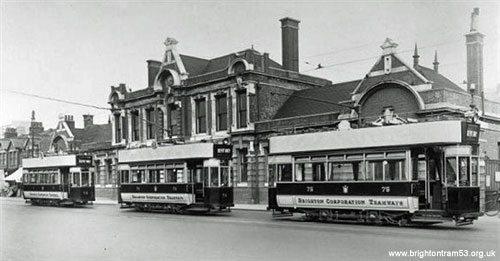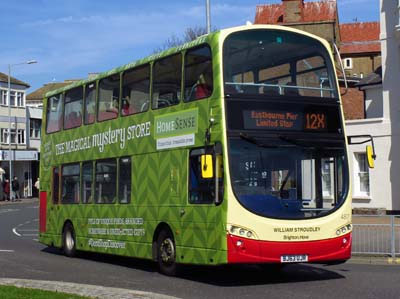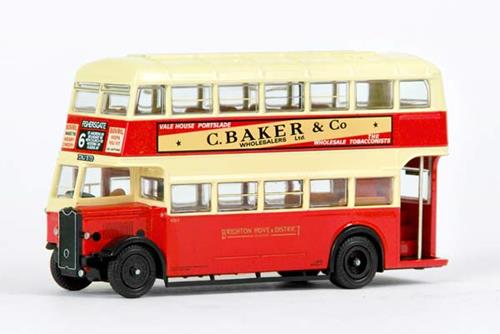

 STUART JORDAN tells the history of this iconic bus company.
STUART JORDAN tells the history of this iconic bus company.
Bus transport began in Brighton during the middle of the 19th Century, with the arrival of the railways, bringing a demand for public transport. The station was built by the London & Brighton Railway in 1841, and horse-drawn omnibuses would ferry passengers from the station to destinations around Brighton and Hove.
The various horse-drawn bus companies were amalgamated into one in 1884 into the Brighton, Hove & Preston United bus company, which was the early forerunner of the current bus operator. In 1901 trams came to Brighton, with the Brighton Corporation Tramways running from their garage in Lewes Road.

Brighton Corporation trams outside the Lewes Road Depot.
In 1903 the BH&PU began running the first motor buses in Brighton & Hove, their noise and fumes bringing much consternation to local shopkeepers.
Twelve years late in 1915 the South Coast Motor Services Company took over the Brighton to Worthing route from the BH&PU, and the company was renamed Southdown Motor Services (some of their iconic green buses can be seen at Amberley Museum).
In the same year, the Tilling bus company (which ran routes in London and other parts of South-East England) set up in Brighton. In 1916 they took over the BH&PU, replacing all remaining horse buses with motor buses – so for most of the inter-war period, buses in Brighton & Hove were run by Tilling and Southdown, alongside the Brighton Corporation trams.
In 1935 Tilling formed a new subsidiary; the Brighton, Hove & District Omnibus Company Ltd. Due to improvements in technology, the Brighton Corporation Tramway was gradually replaced with a trolleybus system. The last Brighton tram arrived at the Lewes Road depot early in the morning of 1st September 1939, around the same time Germany was invading Poland (but the two events are not linked in any way). 1939 was also the year that the red and cream livery was first adopted by Brighton buses, although for part of the war they were painted grey.
The BH&D prospered as a private company as part of Tilling, but in 1948 as part of the post-war nationalisation programme it was sold to the British Transport Commission. After becoming a part of the Transport Holding Company in 1964, in 1969 the operation of Brighton & Hove buses fell under the control of the National Bus Company – which brought the running of both the BH&D and Southdown bus companies under the same local management. The buses themselves were first liveried in Southdown light green, and then NBC dark green.
In 1985 Brighton & Hove formally split from Southdown, and a bright red, cream, and black livery was introduced. The dormant BH&D Omnibus company is reborn, but it was still owned by the NBC.

A current Brighton & Hove bus with the name 'William Stroudley', named for the famous London, Brighton & South Coast Railway designer. Photo- Brighton & Hove.
The company was privatised after a management buy-out in 1987, and then bought by the Go Ahead Northern Group Ltd in 1993 – which then became the Go Ahead Group plc in 1994, one of the largest public transportation companies in the UK. A recent practice is naming buses by public vote; the buses are named after famous people who have made a significant contribution to the city, which of course adds an extra dimension for bus-spotters!

Guy Arab 1 Utility Bus Brighton Hove & District
EFE currently produce a selection of OO Scale Brighton motor buses that can be used straight out the box, and some are at fantastic prices. More adventurous N Scale modellers may want to look at the Oxford Diecast Trolleybuses. Although the range doesn't currently include a Brighton trolley, it can be repainted.